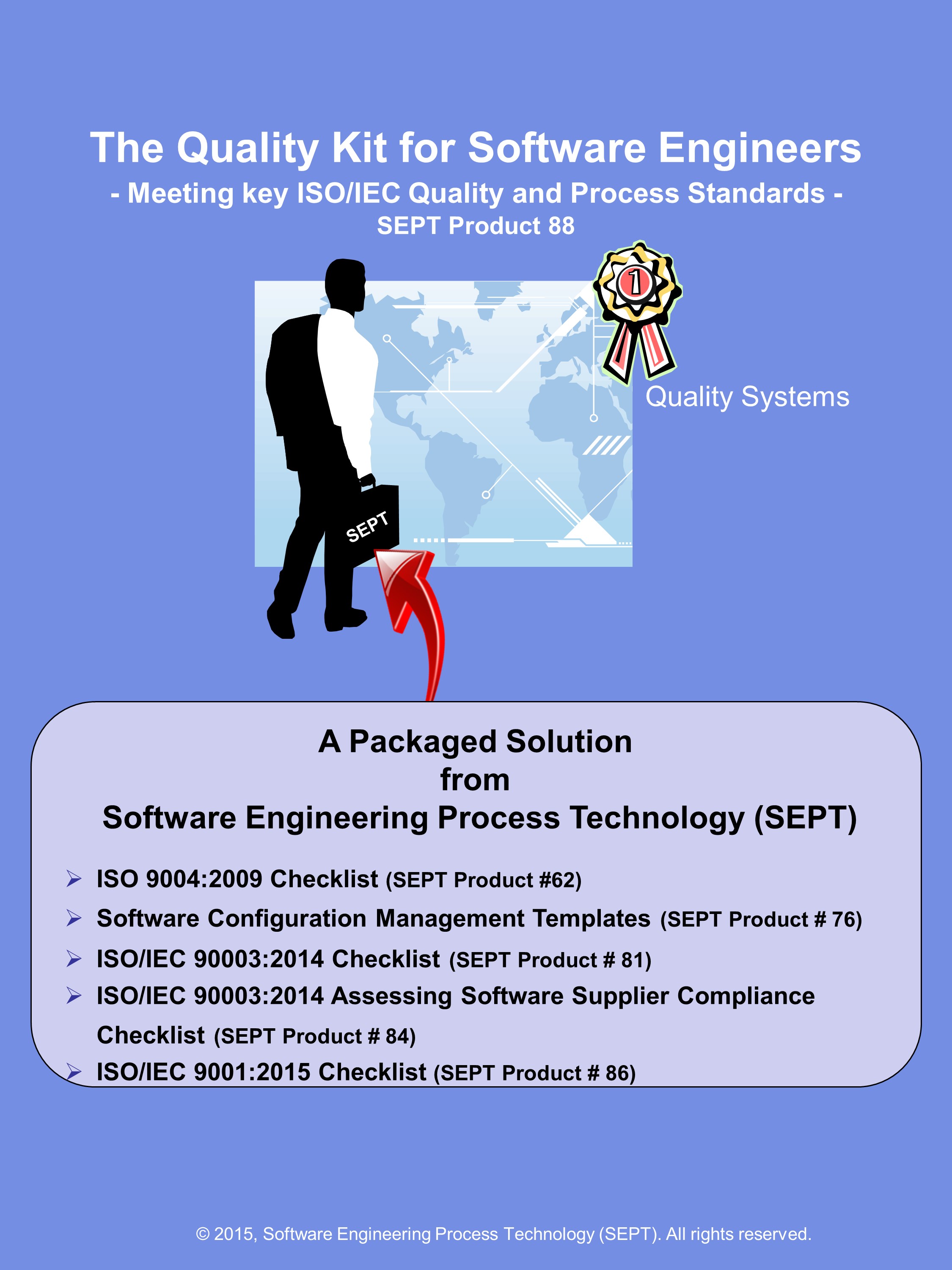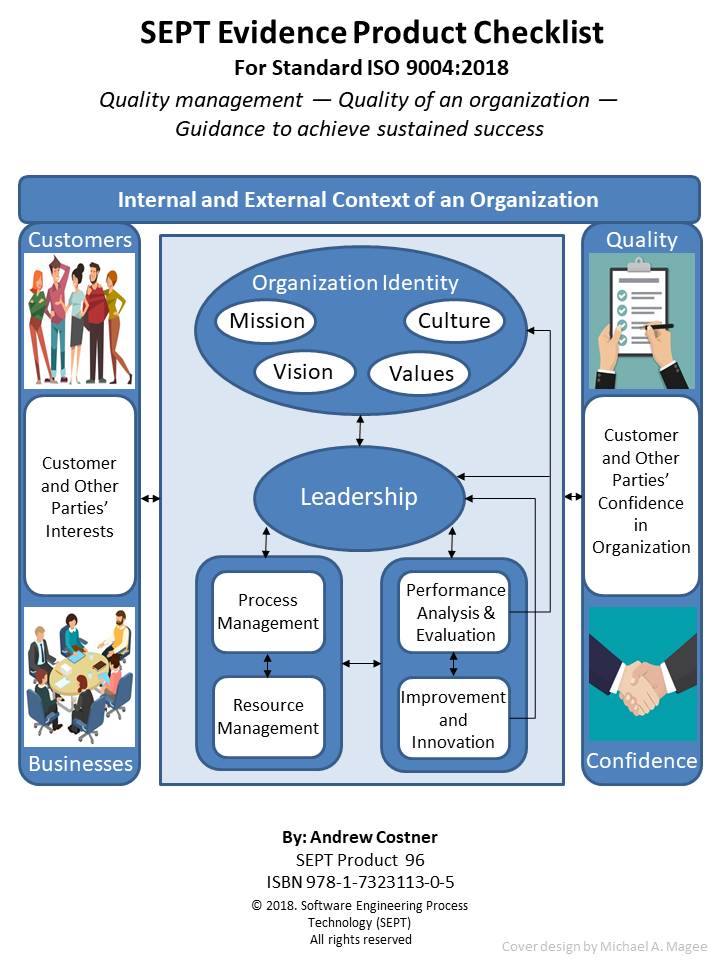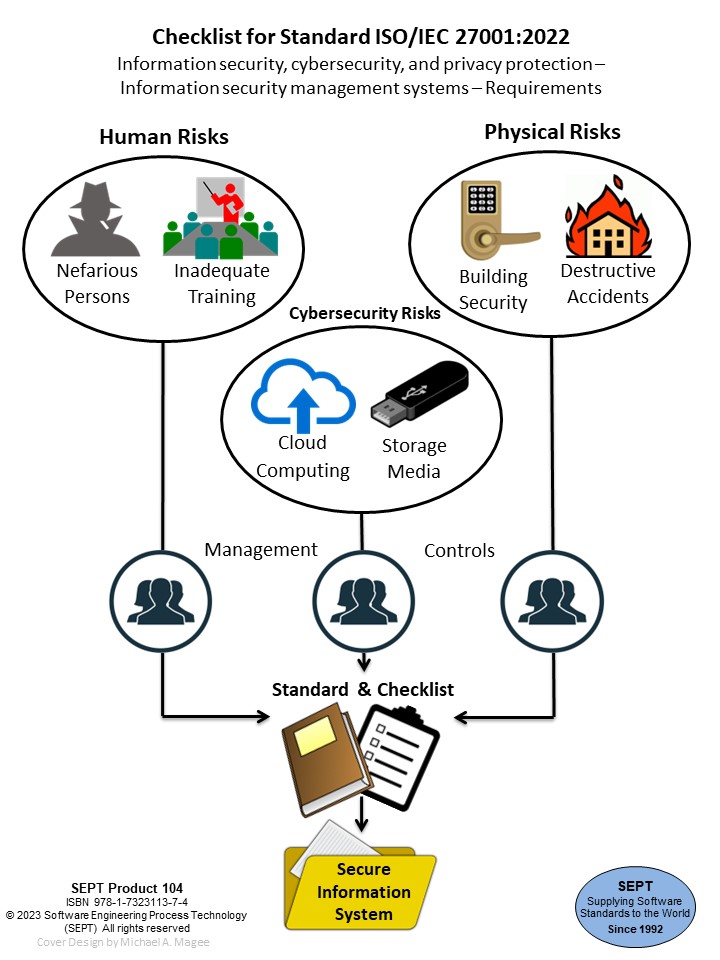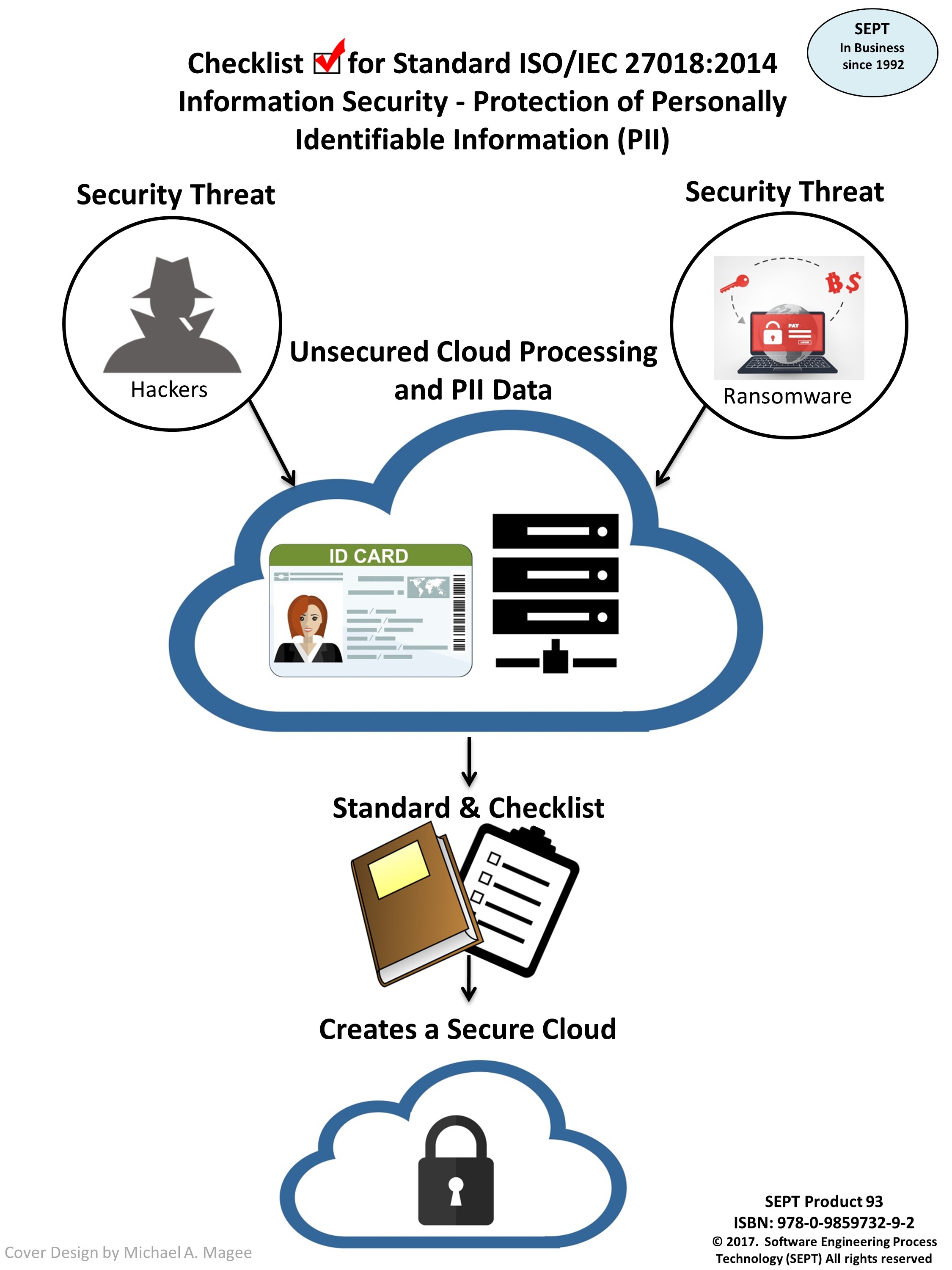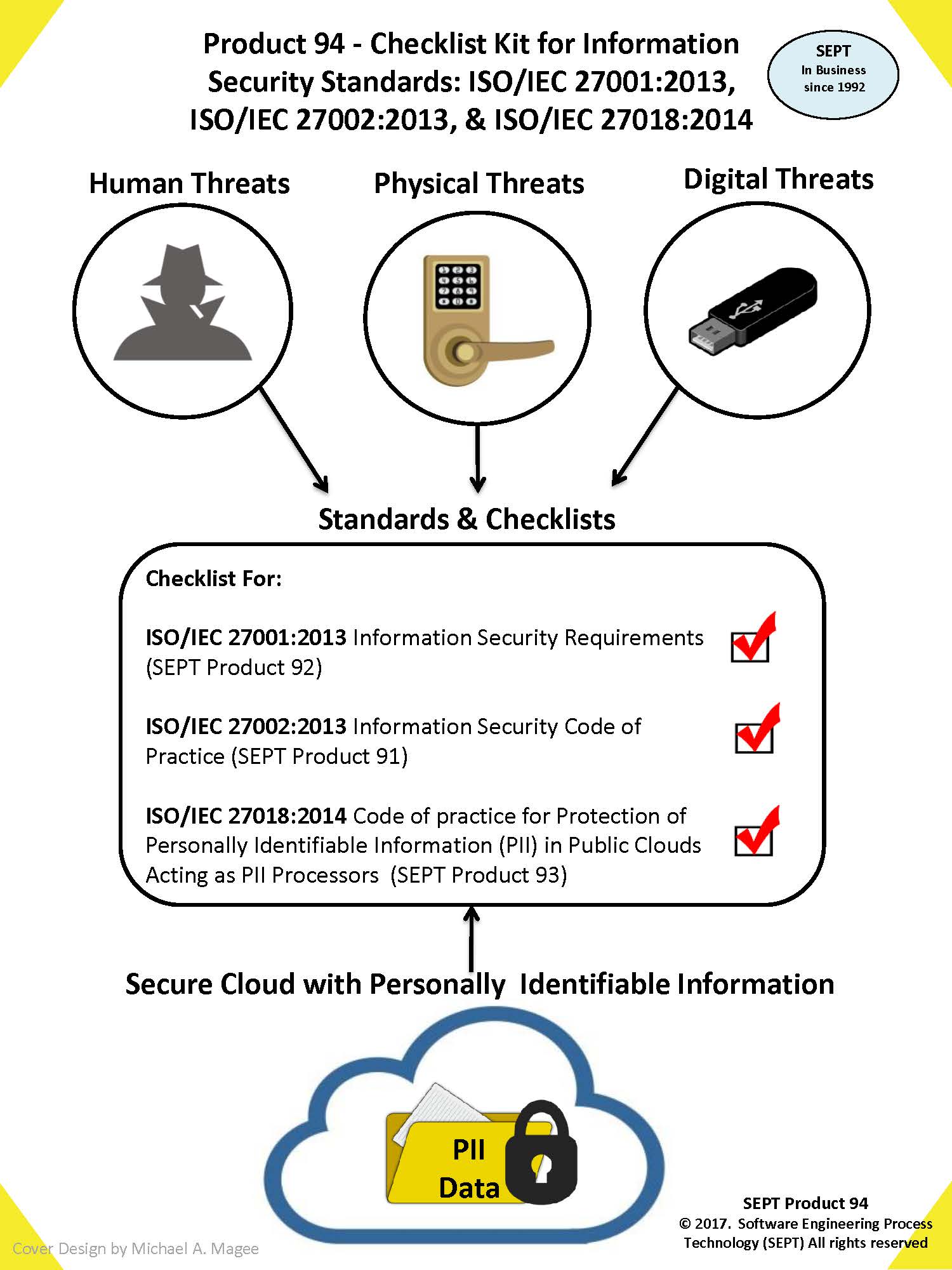ISO/IEC 20000-1:2011 “Information Technology – Service Management –Part 1: Service Management System Requirements”
Author: Andy Coster, CCP
Cover: Available
Customer Set for this product: The is the 9001 for service management firms
Format: Word® (To save money, click here for our PDF version)
ISBN numbers: 978-0-9819522-8-4/0-9819522-8-3
Language: English
Page count: 123
Provider: SEPT
Sample Pages: Available
Shipping: Available for download - Link will be provided in My ComplianceOnline section
Now! The experts at SEPT have produced a checklist for ISO/IEC 20000-1:2011. ISO/IEC 20000-1:2011 is a service management system (SMS) standard. It specifies requirements for the service provider to plan, establish, implement, operate, monitor, review, maintain and improve an SMS. The requirements include the design, transition, delivery and improvement of services to fulfill agreed service requirements.
ISO/IEC 20000-1:2011 can be used by:
- an organization seeking services from service providers and requiring assurance that their service requirements will be fulfilled;
- an organization that requires a consistent approach by all its service providers, including those in a supply chain;
- a service provider that intends to demonstrate its capability for the design, transition, delivery and improvement of services that fulfill service requirements;
- a service provider to monitor, measure and review its service management processes and services;
- a service provider to improve the design, transition, delivery and improvement of services through the effective implementation and operation of the SMS;
- an assessor or auditor as the criteria for a conformity assessment of a service provider's SMS to the requirements in ISO/IEC 20000-1:2011.
ISO/IEC 20000-1:2011 promotes the adoption of an integrated process approach to effectively deliver managed services to meet business and customer requirements. For an organization to function effectively it has to identify and manage numerous linked activities. Co-ordinated integration and implementation of the service management processes provides the ongoing control, greater efficiency and opportunities for continual improvement.
Organizations require increasingly advanced facilities (at minimum cost) to meet their business needs. With the increasing dependencies in support services and the diverse range of technologies available, service providers can struggle to maintain high levels of customer service. Working reactively, they spend too little time planning, training, reviewing, investigating, and working with customers. The result is a failure to adopt structured, proactive working practices. Those same service providers are being asked for improved quality, lower costs, greater flexibility, and faster response to customers.
In contrast, effective service management delivers high levels of customer service and customer satisfaction. It also recognizes that services and service management are essential to helping organizations generate revenue and be cost-effective. The ISO/IEC 20000 series enables service providers to understand how to enhance the quality of service delivered to their customers, both internal and external.
The ISO/IEC 20000 series draws a distinction between the best practices of processes, which are independent of organizational form or size and organizational names and structures.
The ISO/IEC 20000 series applies to both large and small service providers, and the requirements for best practice service management processes are independent of the service provider's organizational form. These service management processes deliver the best possible service to meet a customer's business needs within agreed resource levels, i.e. service that is professional, cost-effective and with risks which are understood and managed.
Difference between the 2011 version and the 2005 version:
The 2011 standard contains:
- A method of defining the scope of the service management system
- Change of terminology to reflect global usage of the standard
- Clarification of the processes operated by others in the system
- Closer alignment to ISO 9001 and ISO/IEC 27001
- Defining that the PDCA methodology applies to the service management system
- Put all management system requirements in one clause
- Requirements for the design and migration of new and changed services
- Update of the definition section of the standard
- Use of a new term “service management system”
This checklist was prepared by analyzing each clause of this document for the key words that signify a policy, procedure, plan, record, document, audit, or review. The Checklist provides an easy-to-use classification scheme of physical evidence comprised of procedures, plans, records, documents, audits, and reviews. The number required or suggested by this document is over.
Artifact |
# |
Policy and Procedure |
150+ |
Plan |
25+ |
Record |
40+ |
Document ( Including Manuals, Reports, Scripts and Specifications) |
50+ |
Audit |
5 |
Review Total |
90+ 360+ |
The Checklist clarifies what is required for compliance through a product evidence list that will assist any organization in meeting the requirements of this standard. Every Checklist comes with four hours of free consultation. SEPT will answer any question concerning the standard or Checklist for 60 days after purchase. Use of the Checklist will save time and money, and may aid in meeting certain governmental requirements. This is an aid that will pay dividends. A quality product at a reasonable price!
Key Words:
- Service Management
- Service providers in a supply chain;
- Benchmark IT service management;
- Deliver managed services
- Ability to meet customer requirements;
- ISO 9001
This product supports these Software Engineering processes
- Documentation
- Quality
- Quality Management
- Life Cycle Quality
Customers of this product:
- Business It, Argentina
- Ecole de technologie superieure
- SMV Inc, Canada
- Vtr, Chile
Note: “International Standards (ISO) define the best of practices for Medical Device and Software firms in producing a quality product. This checklist that SEPT produces will ensure that all of the best of practices are adhered to.”
Customers Also Bought
- 13485: 2016-9001:2015 Small Business Package
Price: $697 BUY NOW - 13485: 2016-9001:2015 All-in-One Documentation and Training Package
Price: $997 BUY NOW - 13485 P-424 Document Control
Price: $39 BUY NOW - 13485 P-425 Control of Quality Records
Price: $39 BUY NOW - 13485 P-500 Management Responsibility
Price: $39 BUY NOW - 13485 P-620 Competence, Awareness and Training
Price: $39 BUY NOW



